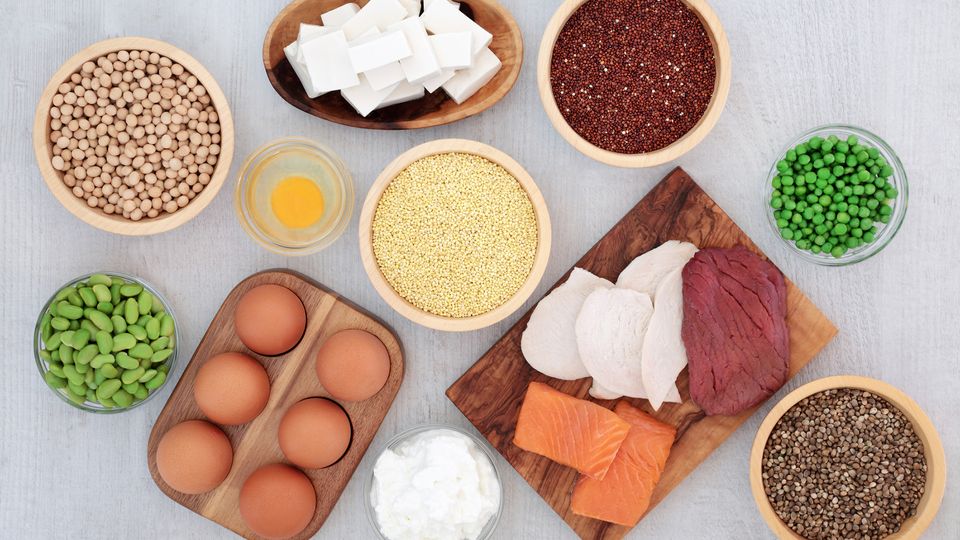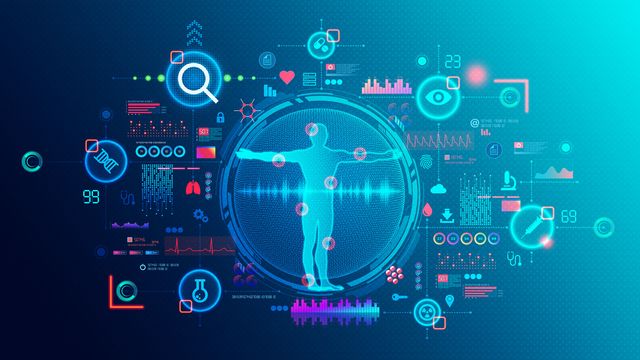Exploring the Alternative Protein Food Source Landscape

There has been significantly increased interest in novel protein sources as alternatives to animal products in the last few years. Consumers’ motivations may differ, including anything from concerns over climate change or animal welfare to allergies and perceived health benefits, but the demand is there. Consequently, there has been a rise in investment in this area mirrored by a spike in scientific publications.
In this list, we will consider some of the popular and up and coming alternative protein food sources.
Plants
For some time, plants have somewhat hogged the limelight in both the traditional and novel alternate protein markets. The likes of soy milk have been around for decades while the use of sources like pea or soy proteins fashioned into creations such as the Impossible BurgerTM and plant-based “steak” are more recent. Legumes have traditionally supplied many of the rich protein sources we look to as an alternative to animal products thanks to their all-round nutritional profile, cheapness and accessibility. However, compared to some other alternatives, many plants provide a limited range of essential amino acids. Researchers have found that the proteins obtained from peas (the pulse rather than leguminous proteins that are derived from the pod and the rest of the plant) are generally a richer source of essential amino acids, although lacking in sulfur-containing amino acids including methionine and cysteine.1 Their physical attributes, such as viscosity, solubility and capacity to retain water and oil have also made pea proteins an attractive proposition.2
Textural and aroma profiles have been a challenge with plant-based alternatives, especially when it comes to creating mixtures suitable for 3D printing – a technique growing in popularity in the future foods market.3, 4, 5 Peanut protein has been found to provide good textural and sensory acceptance from consumers in 3D printed food experiments6 but comes with the added complication of allergenicity for a not insignificant proportion of society. By using multiple plant proteins in combination, including the well explored pea and soy proteins along with others such as oat, fava bean7 and corn zein,8 a number of studies found they were able to create mixtures that were amenable to 3D printing whilst also boosting nutritional profiles.
Leaves
“Leaves are plants surely?!”, I hear you say. Yes, that’s very true but they are being listed here separately as, while they have been used in animal feeds for many years, in the past they have typically been overlooked in the plant-based food world as a protein source in favor of protein-rich seeds and roots. Many of us may be familiar with jackfruit as a meat substitute but its leaves are also showing promise with high protein content, antioxidants and favorable functional properties.9 A number of other leaves have also been evaluated and found to have positive nutritional, medicinal and functional characteristics. Included are water hyacinth, particularly rich in phenylalanine and leucine,10 moringa leaf, rich in leucine and valine,11 as well as pumpkin plant leaves and amaranth.12 While they may not offer the all-round nutritional or amino acid profiles of some other alternative protein sources, generally they are cheap and may be accessible to those in areas where other sources may be challenging to obtain.
Insects
For many people accustomed to a Western diet, insects may have a “yuck” factor, but they have been providing much needed protein to people around the globe for centuries. They have already become an increasingly popular protein source in animal feeds for agriculture and aquaculture too. A number of insect species, including mealworms,13 crickets,14 Kolbe15 and the black soldier fly16 have been investigated for their protein potential. For the more squeamish, insect meal has proven to be a useful medium for incorporating insect proteins into a food that is still desirable to eat and at the same time amenable to the production methods required. Extraction method has been found to play an important role in the protein yield from the insects, with one study finding it ranged from 20 to 75% depending on the techniques employed.14 Lifecycles for insect cultivation are far shorter than typical agricultural animals and, as an added bonus, many species can also be reared on waste products, further reducing environmental pressures.
Microalgae
Microalgae brings a number of positive attributes to the protein dinner table. It’s easy to cultivate in a relatively small space for its protein output (< 2.5m2/kg protein17 compared to 144–258 m2/kg protein for beef18), grows around 10 times faster than traditional crops, is unaffected by weather conditions and seasonality and, being a plant, helps to mop up unwanted carbon dioxide at the same time. Unlike their terrestrial counterparts, microalgae can be grown with minimal freshwater consumption and can even be grown in seawater. In addition, microalgae produce a number of bioactive compounds such as oligosaccharides, long-chain polyunsaturated omega-3 fatty acids, essential minerals and vitamins, that have potentially beneficial values to human health including immunomodulatory, anticancerogenic and antihypertensive properties.19 Chlorella and Arthrospira species have attracted particular attention, being found to have well-balanced amino acid profiles for our needs, similar to that of eggs or soybeans.20
However, while some species of microalgae appear to be an excellent source of protein and other healthful compounds, texture has been a significant barrier.21 They produce very soft and flexible pastes that are challenging for extrusion and 3D printing4 when trying to incorporate them into desirable food products. Consequently, they must be combined with other ingredients that provide stability and increase rigidity such as cereals, soy protein or other algal species.22
Microalgae proteins are not currently widely used in the food industry as the processing technology required to generate them on a large scale is still in its infancy. However, that has not stopped scientists from working on product development in the background with scientist at ETH Zurich currently developing an alternative to prawns using microalgal proteins as just one example.
Fungi
Fungi are no newcomers to the alternative protein source market with QuornTM leading the way for many years since it came onto the market in 1985.23 Fungi are easy to cultivate, cheap, low in fat and offer a good range of nutrients, vitamins and minerals in addition to compounds associated with antioxidant, antitumor, antidiabetic and antihypercholesterolemic activities.24 As well as being consumed as mushrooms, which some prize for their meaty texture, fungi can be milled into a flour that can be mixed with other ingredients and used to form products or utilized in 3D printing. Fungal biomass in the form of filamentous fungi grown in fermenters, as utilized in the production of Quorn, is a current area of interest and development.25 Scientists at UC Davis have even turned fungi into a high-protein beverage. The ability to select for or engineer in desirable characteristics, such as boosting the production of certain beneficial proteins or improving growth in a precision fermentation scenario, make mycoproteins an exciting avenue for the alternative protein field.26
Microbes
While fungi represent one aspect of microbes in food production, other classes of microbes such as yeast and bacteria are proving useful in the production of alternative proteins. Genes encoding desirable proteins may be engineered into microbes and expressed at high levels in fermenters. This enables the bulk production of target proteins in the absence of products that may be less desirable such as antinutrients. Scientists have explored the viability of many bacterial species, with particular attention given to autotrophic hydrogen-oxidizing bacteria that can produce large quantities of protein using agro-industrial waste as a nutrient source.27 This, along with lower energy consumption and other reductions in environmental impact make microbial fermentation as a means of bulk protein production an attractive proposition. A team investigating a number of bacterial species were able to produce microbial proteins that were superior in quality to soy protein and provided important amino acids.28
Cell culture
In 2013, Professor Mark Post from Maastricht University created the first burger made from lab-grown meat. While we may still be a way off grabbing a fully lab-grown steak or chicken breast from the supermarket, cell culture offers a lot of favorable possibilities to the alternative protein world. Genetic engineering and editing technology in partnership with ever improving cell culture technologies mean that we can look to gain the benefits of animal-derived cells, or their products such as milk, without the same environmental impact of livestock agriculture.29 Furthermore, other beneficial properties may be added in that are not present in the original cells or organisms, such as bovine cells that produce carotenoids. The technology is not limited to animal cells either, meaning desirable plant or insect cells too could be generated in a more controlled and streamlined way than is possible when dealing with whole living organisms.
In striving to create structured tissues rather than merely sheets of cells, their production is less straightforward than microbial fermentation vats, with the need for appropriate scaffolding and cues to develop structured fibers. From an environmental standpoint, there has also been some debate around the “green credentials” of cell cultured meat due to the energy required to grow and maintain them and the fetal calf serum used in most cultured cells.
1. Stone AK, Karalash A, Tyler RT, Warkentin TD, Nickerson MT. Functional attributes of pea protein isolates prepared using different extraction methods and cultivars. Food Res. Int. 2015;76:31-38. doi:10.1016/j.foodres.2014.11.017
2. Shanthakumar P, Klepacka J, Bains A, Chawla P, Dhull SB, Najda A. The current situation of pea protein and its application in the food industry. Molecules. 2022;27(16):5354. doi:10.3390/molecules27165354
3. Zhang Y, Lee AY, Pojchanun K, et al. Systematic engineering approach for optimization of multi-component alternative protein-fortified 3D printing food Ink. Food Hydrocoll. 2022;131:107803. doi:10.1016/j.foodhyd.2022.107803
4. Bedoya MG, Montoya DR, Tabilo-Munizaga G, Pérez-Won M, Lemus-Mondaca R. Promising perspectives on novel protein food sources combining artificial intelligence and 3D food printing for food industry. Trends Food Sci. Technology. 2022;128:38-52. doi:10.1016/j.tifs.2022.05.013
5. Wang S, Liu S. 3D Printing of Soy Protein- and Gluten-Based Gels Facilitated by Thermosensitive Cocoa Butter in a Model Study. ACS Food Sci Technol. 2021;1(10):1990-1996. doi:10.1021/acsfoodscitech.1c00311
6. Chen Y, Zhang M, Phuhongsung P. 3D printing of protein-based composite fruit and vegetable gel system. LWT. 2021;141:110978. doi:10.1016/j.lwt.2021.110978
7. Lille M, Nurmela A, Nordlund E, Metsä-Kortelainen S, Sozer N. Applicability of protein and fiber-rich food materials in extrusion-based 3D printing. J. Food Eng. 2018;220:20-27. doi:10.1016/j.jfoodeng.2017.04.034
8. Mattice KD, Marangoni AG. Comparing methods to produce fibrous material from zein. Food Res. Int. 2020;128:108804. doi:10.1016/j.foodres.2019.108804
9. Calderón-Chiu C, Calderón-Santoyo M, Herman-Lara E, Ragazzo-Sánchez JA. Jackfruit (Artocarpus heterophyllus Lam) leaf as a new source to obtain protein hydrolysates: Physicochemical characterization, techno-functional properties and antioxidant capacity. Food Hydrocoll. 2021;112:106319. doi:10.1016/j.foodhyd.2020.106319
10. Adeyemi O, Osubor CC. Assessment of nutritional quality of water hyacinth leaf protein concentrate. Egypt. J. Aquat. Res. 2016;42(3):269-272. doi:10.1016/j.ejar.2016.08.002
11. Alain Mune Mune M, Nyobe EC, Bakwo Bassogog C, Minka SR. A comparison on the nutritional quality of proteins from Moringa oleifera leaves and seeds. Yildiz F, ed. Cogent Food Agric. 2016;2(1):1213618. doi:10.1080/23311932.2016.1213618
12. Ghaly AE, Alkoaik FN. Extraction of protein from common plant leaves for use as human food. Am. J. Appl. Sci. 2010;7(3):331-342. doi:10.3844/ajassp.2010.331.342
13. Zhao X, Vázquez-Gutiérrez JL, Johansson DP, Landberg R, Langton M. Yellow mealworm protein for food purposes - Extraction and functional properties. PLoS One. 2016;11(2):e0147791. doi:10.1371/journal.pone.0147791
14. Amarender RV, Bhargava K, Dossey AT, Gamagedara S. Lipid and protein extraction from edible insects – Crickets (Gryllidae). LWT. 2020;125:109222. doi:10.1016/j.lwt.2020.109222
15. Kim TE, Kim CT, Sim HJ, et al. Production of protein hydrolysate from Protaetia brevitarsis seulensis (Kolbe) larvae by enzyme treatment under high pressure. Food Sci Biotechnol. 2020;29(9):1187-1194. doi:10.1007/s10068-020-00766-y
16. Shumo M, Osuga IM, Khamis FM, et al. The nutritive value of black soldier fly larvae reared on common organic waste streams in Kenya. Sci Rep. 2019;9(1):10110. doi:10.1038/s41598-019-46603-z
17. Van Krimpen MM, Bikker P, van der Meer IM, van der Peet-Schwering CMC, Vereijken JM. Cultivation, processing and nutritional aspects for pigs and poultry of European protein sources as alternatives for imported soybean products. Report No. 662. Wageningen UR Livestock Research.https://research.wur.nl/en/publications/cultivation-processing-and-nutritional-aspects-for-pigs-and-poult. Published online 2013. Accessed October 11, 2022.
18. de Vries M, de Boer IJM. Comparing environmental impacts for livestock products: A review of life cycle assessments. Livest. Sci. 2010;128(1):1-11. doi:10.1016/j.livsci.2009.11.007
19. Caporgno MP, Mathys A. Trends in microalgae incorporation into innovative food products with potential health benefits. Front. Nutr. 2018;5. Accessed October 11, 2022. doi:10.3389/fnut.2018.00058
20. Becker EW. Micro-algae as a source of protein. Biotechnol. Adv. 2007;25(2):207-210. doi:10.1016/j.biotechadv.2006.11.002
21. Anzani C, Boukid F, Drummond L, Mullen AM, Álvarez C. Optimising the use of proteins from rich meat co-products and non-meat alternatives: Nutritional, technological and allergenicity challenges. Food Res. Int. 2020;137:109575. doi:10.1016/j.foodres.2020.109575
22. Zhao L, Zhang M, Chitrakar B, Adhikari B. Recent advances in functional 3D printing of foods: a review of functions of ingredients and internal structures. Crit Rev Food Sci Nutr. 2021;61(21):3489-3503. doi:10.1080/10408398.2020.1799327
23. Wiebe MG. QuornTM Myco-protein - Overview of a successful fungal product. Mycologist. 2004;18(1):17-20. doi:10.1017/S0269915X04001089
24. Das S, Prakash B. Chapter 11 - Edible mushrooms: Nutritional composition and medicinal benefits for improvement in quality life. In: Prakash B, ed. Research and Technological Advances in Food Science. Academic Press; 2022:269-300. doi:10.1016/B978-0-12-824369-5.00013-0
25. Barzee TJ, Cao L, Pan Z, Zhang R. Fungi for future foods. J Future Foods. 2021;1(1):25-37. doi:10.1016/j.jfutfo.2021.09.002
26. Strong PJ, Self R, Allikian K, et al. Filamentous fungi for future functional food and feed. Curr. Opin. Biotechnol. 2022;76:102729. doi:10.1016/j.copbio.2022.102729
27. Järviö N, Maljanen NL, Kobayashi Y, Ryynänen T, Tuomisto HL. An attributional life cycle assessment of microbial protein production: A case study on using hydrogen-oxidizing bacteria. Sci. Total Environ. 2021;776:145764. doi:10.1016/j.scitotenv.2021.145764
28. Sakarika M, Candry P, Depoortere M, Ganigué R, Rabaey K. Impact of substrate and growth conditions on microbial protein production and composition. Bioresour. Technol. 2020;317:124021. doi:10.1016/j.biortech.2020.124021
29. Wikandari R, Manikharda, Baldermann S, Ningrum A, Taherzadeh MJ. Application of cell culture technology and genetic engineering for production of future foods and crop improvement to strengthen food security. Bioengineered. 2021;12(2):11305-11330. doi:10.1080/21655979.2021.2003665







